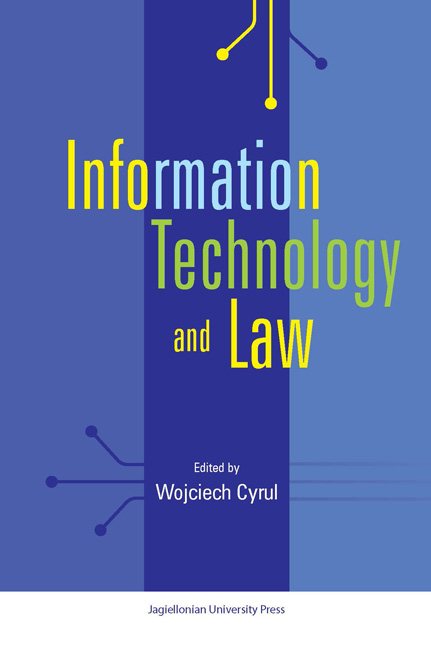Book contents
- Frontmatter
- CONTENTS
- Preface
- Chapter 1 Technological Destabilization of Law
- Chapter 2 Problems with the Storing and Presentation of Information
- Chapter 3 XML Models for Legal Documents: Current Polish Practices and International Standards
- Chapter 4 Similarity Analysis of Polish Legal Documents Using WordNets Semantic Relations
- Chapter 5 Consolidation of Legal Documents in an Electronic Format
- Chapter 6 A Three Dimensional – Code and a Question of the Normative Hyper-linking?
- Chapter 7 The Law, Labour Unions and Information Technology: Enhancing or Restricting Democracy at the Workplace
- Chapter 8 Protection of the Consumer in Digital Content Contracts
- Chapter 9 Procedure, Time and Imputation in Criminal Law
Chapter 2 - Problems with the Storing and Presentation of Information
Published online by Cambridge University Press: 05 December 2014
- Frontmatter
- CONTENTS
- Preface
- Chapter 1 Technological Destabilization of Law
- Chapter 2 Problems with the Storing and Presentation of Information
- Chapter 3 XML Models for Legal Documents: Current Polish Practices and International Standards
- Chapter 4 Similarity Analysis of Polish Legal Documents Using WordNets Semantic Relations
- Chapter 5 Consolidation of Legal Documents in an Electronic Format
- Chapter 6 A Three Dimensional – Code and a Question of the Normative Hyper-linking?
- Chapter 7 The Law, Labour Unions and Information Technology: Enhancing or Restricting Democracy at the Workplace
- Chapter 8 Protection of the Consumer in Digital Content Contracts
- Chapter 9 Procedure, Time and Imputation in Criminal Law
Summary
1. Introduction
The reality around us is characterized by the importance of information as well as its high value to the public. The information society needs fast and reliable communication. Due to the wide availability of computers, including mobile ones, information and communications technologies are exploited in everyday life (electronic shopping, banking, entertainment, source of knowledge). We are witnessing the digitalization of life.
Regardless of the area of application, the use of computers is based on the processing and storing of data (numbers, digits, characters of different format). Such processing is performed with algorithms and it is based on the transformation of input data into an output one. A data set internally linked may be viewed as information. The information (in fact, information is an indefinable term) is recognized as structured data, the message transmitted, having a simple or aggregated form (note that it is often mistakenly believed that information and data are synonymous). Due to the nature of information, the processing of information is based on the processing of information codes and depends on its simple (atomic) or complex (aggregated) form. Such codes, generated with dedicated algorithms, are processed on the lower level as data. The aim is to transform data into information codes and then information into knowledge.
Information processing problems are related to the (1) adequate representation in form of data (information codes; including storing issues) and (2) nontrivial algorithms used to process information (codes) into new information or new way of its information.
- Type
- Chapter
- Information
- Information Technology and Law , pp. 27 - 40Publisher: Jagiellonian University PressPrint publication year: 2014



